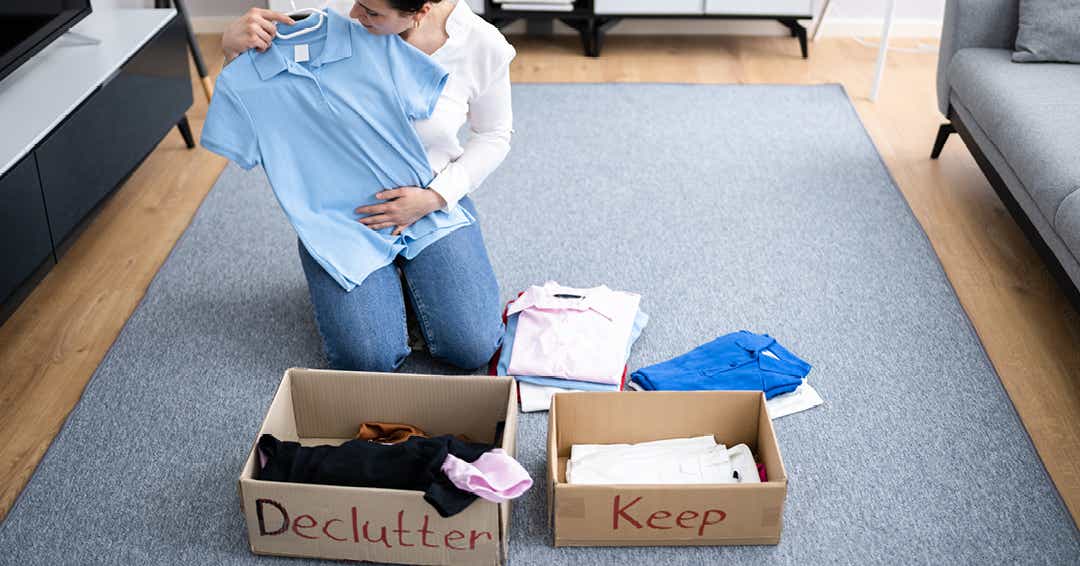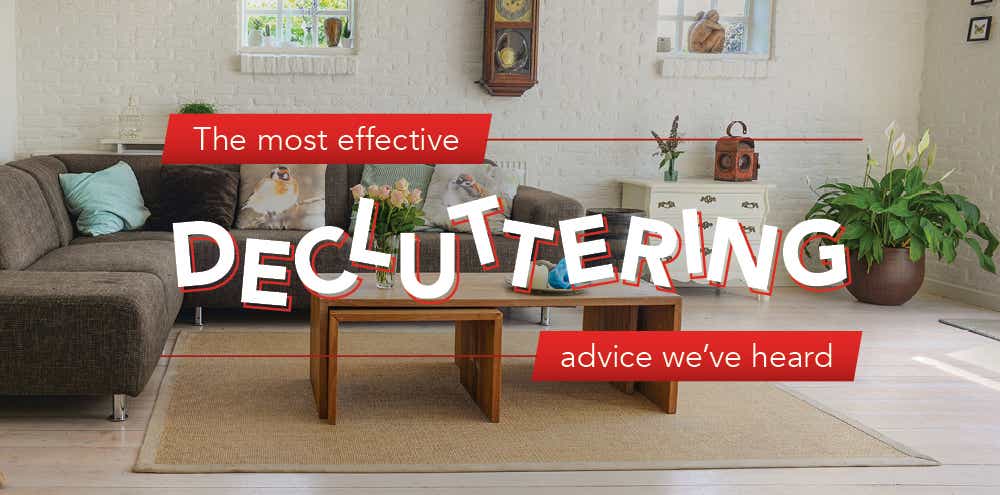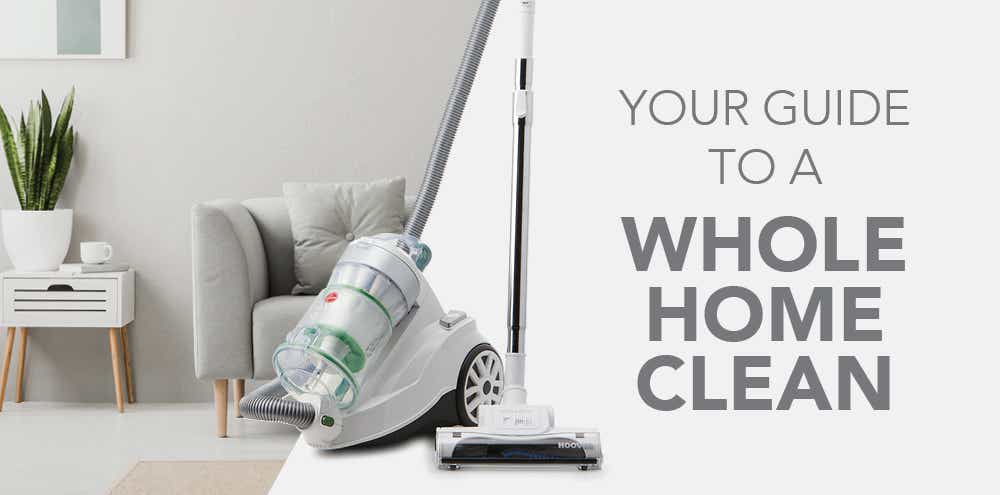Whether you’re getting serious about spring cleaning, about to move or just reassessing how you use your space, it’s never a bad time to think about decluttering.
A cluttered, hard-to-navigate home can have a negative impact on your lifestyle and state of mind, and it can also be harder to keep clean. Dust and dirt settle on overcrowded shelves or under unnecessary furniture, causing you to pick things up and move them over and over again just to thoroughly clean a room.
There’s no exact science to decluttering your home and everyone has to find the perfect balance for them. Not everyone is open to embracing minimalism, just as not everyone likes filling their home with possessions. But everyone can benefit from looking at their spaces with a critical eye and making some changes to positively impact their lives.
To help you find the right decluttering strategy for you, here are some of the best tips we’ve heard.
Establish rules before you start
This will look different for everybody. Some people benefit from hard and fast rules – I can only keep this many pairs of shoes, I have to get rid of this many books – while others may take a more situational or emotion-driven approach. Think tidying expert Marie Kondo and her now-famous catchphrase, “Does this spark joy?” Or even the simple question of, “Do I actually use this?”
Establishing these guidelines in advance and sticking to them will make the process of decluttering easier, faster and less stressful.
Have a strategy
Similarly, come up with an action plan before you start and break the greater task into smaller, more achievable goals to make decluttering less overwhelming. Will you go room by room or tackle certain categories – going through all the books in your house, then all the clothes, and so on. Whatever your strategy, commit to finishing one goal or section before moving on to the next.
Do smaller tasks first
If you’re looking at your home as a whole and the job of decluttering seems daunting or stressful, start with the smallest tasks on your list first. Decluttering even one small area of your home – a single shelf or drawer, for example – will produce a tangible difference you can see and help you build up momentum to take on the rest of the house.
Use action boxes
Designate different boxes or bags depending on what you’re going to do with each item in an area or room. These boxes might be different for each person, but a common approach is to set up a box for things you’re keeping, one for things you’re throwing away, one for things you’re donating and one for things that need to be returned to other rooms in your home. Place things in the appropriate box as you declutter then, after you’ve finished a room, action accordingly.
Give everything a place
Everything in your home should have a designated place where it lives. Whether this is a drawer, a shelf or a box, you should know exactly where each item should be returned to when you’re done with it. This will stop you from leaving things lying around because it’s easier than thinking about where you could possibly put them. Over time, it will become instinct to place everything back where it belongs.


Keep track of reoccurring clutter
Identify high-clutter areas like benches, beside tables and entryways and keep an eye on them. In the days after decluttering, make note of items that end up back in those spots. These tend to be items you use a lot, so reconsider where you’re keeping them. Their designated spots should be as accessible as possible to discourage just leaving them anywhere.
Declutter paperwork
Paperwork tends to cause clutter, so it’s important to keep on top of it. That means no more boxes of random forms and letters or envelopes strewn across counters. Go through every piece of paperwork in your home, file important documents away and put the rest in the recycling bin. Going forward, take a moment to sort through mail as soon as you get it, throwing out anything you don’t need and making plans to action everything important as soon as possible.
Don’t clean as you go
Resist the urge to clean up messes as you go. Stopping to deep clean everything will break your momentum and drag out the entire process. Carry a cloth or rag around with you to quickly dust anything that needs it, but save vacuuming and wiping down surfaces until you finish.
Approach it mathematically
For those with a logical mind, it might help to view the task of decluttering mathematically, breaking each space or type of clutter into percentages. For example, some people suggesting leaving 10% free space on your bookshelf to allow for your collection’s future growth, or 75% free space on a coffee table to keep it as functional as possible.
Edit, then organise
When things are hidden away in cupboards and drawers, it’s easy to forget you own them. Going cupboard by cupboard, drawer by drawer and shelf by shelf, take everything out to assess. Edit down each collection by throwing out expired bathroom or kitchen products and deciding what you don’t use or need, then put back whatever’s left in a more organised way.
Buy fewer, better products
Minimise future clutter by shopping more strategically. As products run out, try to buy replacements that serve multiple purposes, take up less space and do their jobs more effectively. Over time, this will allow you to streamline your home until everything in it is consistently earning its place.
Wardrobe probation
For a lot of people, clothes are one of the hardest things to declutter. To combat the constant thought of, “Oh, but I might wear that in the future”, implement a wardrobe probation system. Separate everything you’re not 100% sure about keeping and set a time period – a month or season, for example. Commit to donating or selling anything you haven’t reached for in that time.
Alternatively, turn around the hangers of every single item in your closet. After you wear an item, turn the hanger the right way around. Anything still facing backwards at the end of your probation period should be decluttered.
Take before and after photos
For the visually minded, seeing the impact your time and effort are making may help inspire you to keep going. Take before and after photos of every area or room you declutter to remind yourself of where you started and what you’ve achieved.


Audit your utensils
As strange as it sounds, treat your kitchen like you treat your wardrobe. Put all your utensils and tools in a box, and only place them back in drawers after they’ve been used. This will help you weed out unnecessary doubles and gadgets you thought would change your life but never touched.
Have an odd sock bin
This is a niche piece of advice to tackle an all-too-common problem. Keep a box or tub in your laundry to store any odd socks you come across in your washing. After a month or so, take out any pairs in the tub to put back in your wardrobe, then throw out the rest.
Be prepared to take your time
The easiest way to guarantee decluttering failure is to psyche yourself out and set up unrealistic expectations. Don’t expect to achieve your minimalist dream home in a single day. Take your time, do a little bit every day and be thorough.
Don’t be afraid to ask for help
Depending on the amount of clutter you’re dealing with, this could be a big and daunting task. Sometimes it’s easier to get through this kind of time-consuming chore with company, so recruit your most helpful and supportive friend to help get the job done. We promise they’re not judging you or your home, even if you’re worried they might be. Choose carefully however, and don’t invite anyone over who’ll persuade or pressure you to keep things you don’t want or need.





